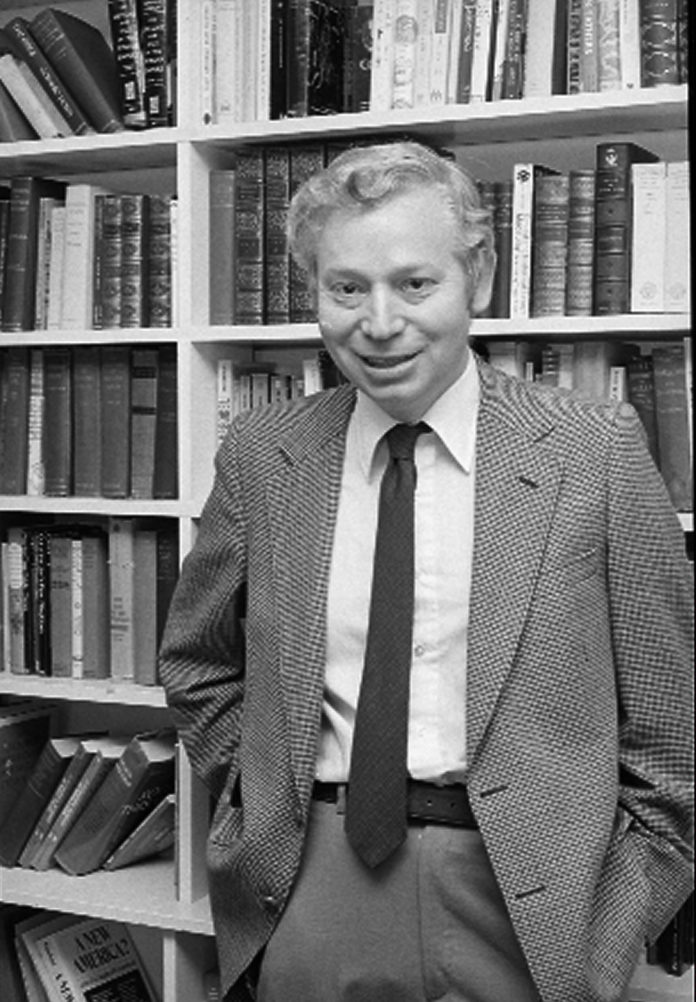
NEW YORK (AP) – Physicist Steven Weinberg, who won the Nobel prize in 1979 with two other scientists for their separate contributions unlocking mysteries of tiny particles and their electromagnetic interaction, has died at 88, the University of Texas at Austin said Saturday.
Join our WhatsApp groupSubscribe to our Daily Roundup Email
A professor at the university since the 1980s, Weinberg died Friday in Austin, Texas, according to his wife Louise, said UT spokesperson Christine Sinatra. The physicist had been hospitalized for several weeks, but a cause of death was not released, according to Sinatra.
“The passing of Steven Weinberg is a loss for The University of Texas and for society,” UT President Jay Hartzell said in a statement.
“Professor Weinberg unlocked the mysteries of the universe for millions of people, enriching humanity’s concept of nature and our relationship to the world,” Hartzell added.
In 1979, Weinberg shared the Nobel prize in physics with scientists Abdus Salam and Sheldon Lee Glashow. Their work improved the understanding of how everything in the universe relates, according to a UT statement.
The work helped physicists unify two of the four forces of nature, subatomic forces known as nuclear forces, said Sean Carroll, a theoretical physicist at the California Institute of Technology.
“It’s all about understanding the laws of nature at a deep level. We’re curious creatures and we want to know how the universe around us works,” Carroll said.
Weinberg’s work built on the work of Albert Einstein, according to Columbia University string theory physicist Brian Greene.
“The idea was that all forces of nature might actually be the same force … it was this dream Einstein had, that it all might be whole,” Greene said. “He drove this idea forward. He pushed this idea forward by showing (two forces) were the same force.”
Weinberg, Salam and Glashow — working separately — were honored “for their contributions to the theory of the unified weak and electromagnetic interaction between elementary particles, including … the prediction of the weak neutral current,” according to the Nobel Prize website.
A New York native, Weinberg was a researcher at Columbia University and the University of California, Berkeley, earlier in his career. He then served on the faculty of Harvard University and the Massachusetts Institute of Technology before joining the UT faculty in 1982, teaching both physics and astronomy.
Weinberg is survived by his wife and a daughter. Funeral services were not announced.

Amazing how many people comment on the death of Jackie Mason. But nobody cares about this man.
Dr.Steven Weinberg was one of the greatest physicists of the 70s era.
Never in history of mankind was there a time of such advances in our understanding of the nature of creation as in the 20th century. It has been accepted that there are 4 fundamental yet separate forces in nature: gravity, electromagnetism, weak and strong nuclear forces. Albert Einstein and others believed that the 4 separate forces are manifestations of a single Super Force, and the theory to describe it is called the Unified Field Theory. Ever since physicists tried to unified these forces.
Dr.Weinberg was successful in authoring a theory that unified the electromagnetic force and the weak nuclear force, called “electro-weak”. That was step 1. He received a nobel prize as a result. His theory has been experimentally verified. After this, things got harder and while there is a theory called chromodynamics that posits unification of electro-weak and strong nuclear force, there is no direct evidence of it. And while the superstring theories would love to claim to be “it”, there is no evidence that the forces can be unified outside a small time lapse following the big bang.
The reason noone knows or cares today is due to a decline in natural sciences that preceded the societal decline in the US. Science has become a job and not a calling, and today is mostly a bureaucratic process of making sure only look at topics that will ensure getting funding. The same applies to churning out Ph.ds that only want a job on wall street.
The soul of these physicists of yore yearned to discover oneness in the natural world. They instinctively knew that there is a single source to everything in life.
J. Mason gave us a laugh occasionally (he was an overrated comedian). Most of us including myself have never heard of Weinberg and not aware of anything he did for us. Its that simple.